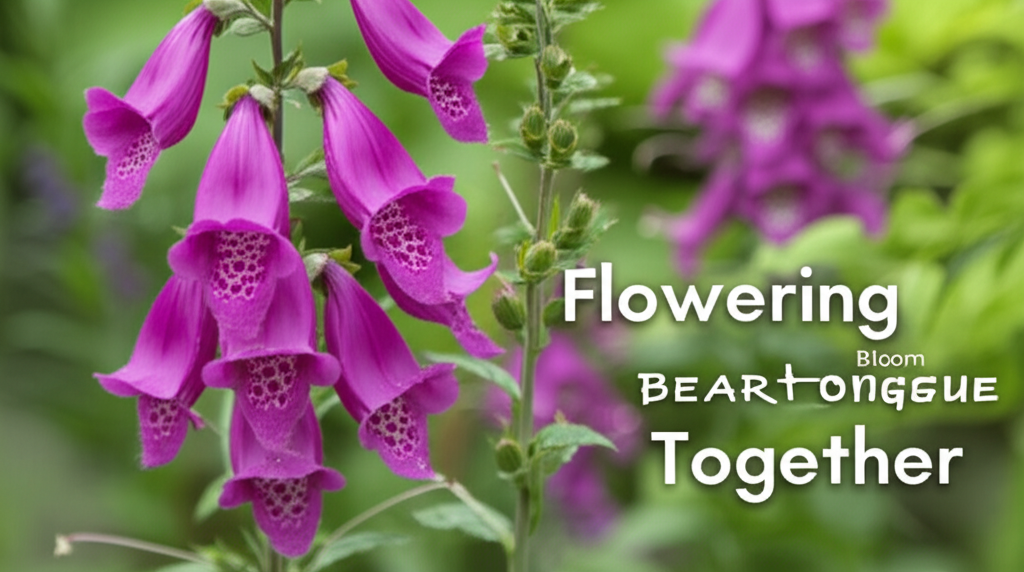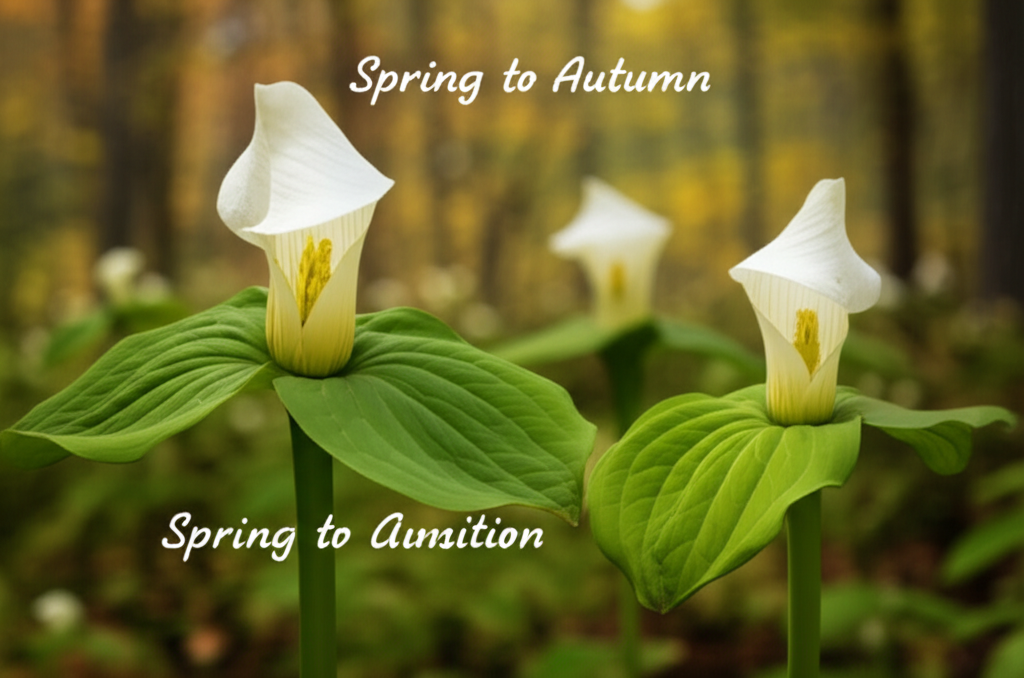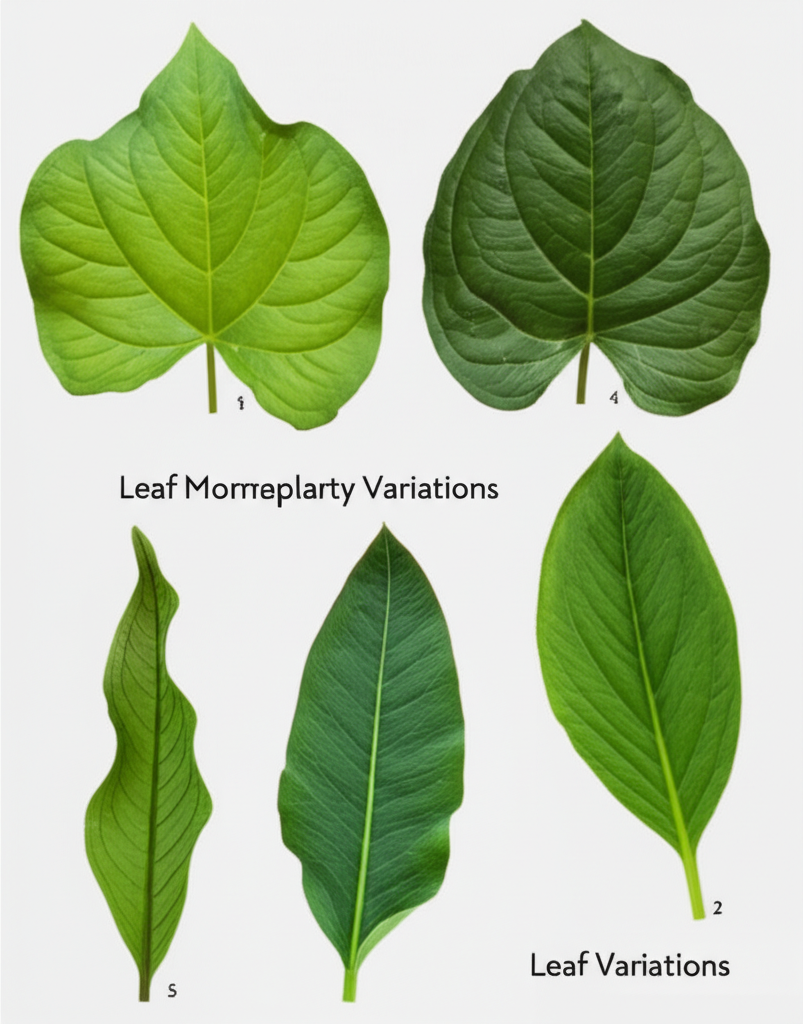Understanding Foxglove Beardtongue (Penstemon digitalis)
Foxglove Beardtongue, scientifically known as Penstemon digitalis, is a captivating native perennial that brings both beauty and ecological benefits to the garden. Its tall, elegant spikes of tubular, white to pale pink flowers are a magnet for pollinators, including bees, butterflies, and hummingbirds. Thriving in a variety of conditions, this adaptable plant is a fantastic addition for gardeners seeking low-maintenance, high-impact flora. However, to truly maximize its potential and create a visually stunning and ecologically robust garden, understanding its companion planting needs is crucial. This article delves into the world of foxglove beardtongue and explores the best plant partners to enhance its growth, flowering, and overall garden appeal.
Key Characteristics of Foxglove Beardtongue
Before we explore companion planting, it’s essential to understand the fundamental needs and characteristics of Penstemon digitalis:
- Bloom Time: Late spring to early summer, typically May through June.
- Flower Color: White to pale pink, often with subtle purple or maroon veining inside the throat.
- Height: 2-4 feet (60-120 cm), with flower stalks extending higher.
- Light Requirements: Full sun to partial shade. Full sun generally leads to more robust flowering.
- Soil Preferences: Adaptable to a range of soil types, but prefers well-drained, moist to average soil. It can tolerate clay soils if drainage is adequate.
- Drought Tolerance: Once established, it exhibits good drought tolerance.
- Pollinator Attraction: Highly attractive to a wide array of native bees, bumblebees, butterflies, and hummingbirds.
- Native Range: Eastern and central North America.
The Principles of Companion Planting with Foxglove Beardtongue
Companion planting is an age-old gardening practice that involves growing different plant species together for mutual benefit. When selecting companions for foxglove beardtongue, we consider several factors:
- Aesthetic Harmony: Choosing plants that complement foxglove beardtongue in terms of color, texture, and bloom time creates a more visually appealing display.
- Pollinator Attraction: Some plants can attract a broader range of pollinators, further enhancing the biodiversity of the garden and benefiting the beardtongue.
- Pest and Disease Management: Certain plants are known to deter pests or attract beneficial insects that prey on common garden pests.
- Nutrient Cycling: While not as critical for beardtongue which is fairly undemanding, some companions can help improve soil health.
- Light and Moisture Requirements: Companions should ideally have similar or compatible needs for light and water to ensure all plants thrive.
Ideal Companion Plants for Foxglove Beardtongue
When pairing plants with Penstemon digitalis, we look for species that share similar growing conditions and offer complementary visual or ecological benefits.
1. Plants with Contrasting Flower Shapes and Textures
The tall, spiky blooms of foxglove beardtongue benefit greatly from companions that offer softer textures and different flower forms.
- Coneflowers (Echinacea species): These iconic prairie natives offer daisy-like flowers in shades of purple, pink, and white. Their sturdy stems and vibrant blooms provide a beautiful contrast to the delicate beardtongue flowers, and they bloom concurrently.
- Black-Eyed Susans (Rudbeckia hirta): With their cheerful golden-yellow, daisy-like flowers and dark centers, black-eyed susans provide a burst of color and texture. They often bloom from mid-summer into fall, extending the visual interest.
- Astilbe (Astilbe species): For shadier areas where beardtongue may be planted, Astilbe offers feathery plumes of flowers in shades of pink, red, and white. Their lush foliage and soft texture are an excellent counterpoint to the beardtongue’s upright form.
- Ferns (various species): Ferns, with their delicate fronds and varied textures, are superb companions, especially in partially shaded conditions. They provide a lush, green backdrop that highlights the beardtongue’s blooms. Consider Ostrich Fern (Matteuccia struthiopteris) or Lady Fern (Athyrium filix-femina).
2. Plants with Complementary Bloom Times and Colors
Extending the season of interest and creating a harmonious color palette are key considerations.
- Columbine (Aquilegia species): These delicate, spurred flowers appear earlier in the season, often blooming in late spring alongside beardtongue. Their intricate blossoms in shades of purple, red, yellow, and white offer a different visual appeal.
- Salvia (Salvia species): Many varieties of Salvia, such as Meadow Sage (Salvia nemorosa), offer spiky blooms of purple, blue, or pink. They often bloom from late spring through summer and into fall, and their strong vertical lines echo the beardtongue.
- Coreopsis (Coreopsis species): Particularly Tickseed (Coreopsis lanceolata), offers cheerful yellow, daisy-like flowers that bloom prolifically from early summer through fall. They provide a bright splash of color and a more compact form.
- Daylilies (Hemerocallis species): While their foliage is more substantial, the trumpet-shaped flowers of daylilies in a vast array of colors can complement the beardtongue beautifully. Choose varieties that bloom in complementary or contrasting colors.
3. Plants that Support Pollinators
Enhancing the garden’s appeal to beneficial insects is a significant advantage of companion planting.
- Milkweed (Asclepias species): Essential for monarch butterflies, milkweeds offer clusters of fragrant flowers that are also attractive to a wide range of bees and other pollinators. Butterfly Milkweed (Asclepias tuberosa) with its bright orange blooms is a particularly striking companion.
- Bee Balm (Monarda species): Also known as Bergamot, Bee Balm is a favorite of bees, butterflies, and hummingbirds. Its unique, shaggy flower heads in shades of pink, red, and purple add a bold statement and attract numerous pollinators.
- Blazing Star (Liatris species): The bottlebrush-like spikes of Liatris, typically in shades of purple or pink, are irresistible to butterflies and bees. They bloom later in the summer, extending the pollinator-friendly season.
Key Facts/Comparison of Foxglove Beardtongue and Companions
The following table outlines some of the key characteristics of foxglove beardtongue and a selection of its prime companion plants, highlighting their similarities and differences to aid in selection.
| Plant Species | Bloom Time | Flower Color | Height (ft) | Light Needs | Soil Preference | Pollinator Appeal |
|---|---|---|---|---|---|---|
| Foxglove Beardtongue (Penstemon digitalis) | Late Spring – Early Summer | White to Pale Pink | 2-4 | Full Sun – Partial Shade | Well-drained, Moist to Average | High (Bees, Butterflies, Hummingbirds) |
| Coneflower (Echinacea spp.) | Mid-Summer – Early Fall | Purple, Pink, White | 2-5 | Full Sun | Well-drained, Average to Dry | High (Bees, Butterflies) |
| Black-Eyed Susan (Rudbeckia hirta) | Mid-Summer – Fall | Golden Yellow | 1-3 | Full Sun | Well-drained, Average | High (Bees, Butterflies) |
| Meadow Sage (Salvia nemorosa) | Late Spring – Fall | Purple, Blue, Pink | 1-3 | Full Sun | Well-drained, Average to Dry | High (Bees, Butterflies) |
| Butterfly Milkweed (Asclepias tuberosa) | Early Summer – Mid-Summer | Bright Orange | 1-2 | Full Sun | Well-drained, Dry | Very High (Monarchs, Bees, Butterflies) |
| Bee Balm (Monarda spp.) | Mid-Summer – Early Fall | Pink, Red, Purple | 2-4 | Full Sun – Partial Shade | Moist, Well-drained | Very High (Bees, Butterflies, Hummingbirds) |
Companion Planting Strategies and Considerations
Effective companion planting involves more than just selecting the right plants; it also includes strategic placement and understanding the nuances of each species.
Planting Arrangements
- Drifts and Groupings: Plant foxglove beardtongue in groups or drifts of three to five plants for a more impactful visual display.
- Layering: Place taller companions behind or alongside the beardtongue, with shorter, mounding plants in front to create a multi-layered effect.
- Color Blocking: Group plants with similar color palettes for a cohesive look, or use contrasting colors to make specific plants stand out.
- Pollinator Patches: Designate areas with a high concentration of pollinator-friendly plants, including beardtongue and its companions, to create a vibrant hub of activity.
Maintenance and Care
Most of the suggested companions share similar low-maintenance needs with foxglove beardtongue.
- Watering: Water deeply but infrequently, allowing the soil to dry slightly between waterings once plants are established.
- Deadheading: While not essential for beardtongue, deadheading spent flowers on some companions like Salvia can encourage reblooming.
- Division: Mature clumps of beardtongue can be divided every 3-5 years in early spring to rejuvenate them and prevent overcrowding.
- Soil Amendment: While beardtongue is adaptable, improving drainage in heavy clay soils with compost is always beneficial for most perennials.
Potential Challenges and Solutions
While companion planting generally enhances a garden, there are a few potential challenges to consider:
- Overcrowding: Ensure adequate spacing between plants to allow for growth and air circulation, which helps prevent fungal diseases.
- Competition for Resources: In very dry conditions or poor soil, ensure companions are not overly aggressive or demanding. Choose drought-tolerant companions if water is limited.
- Shade Tolerance: If planting beardtongue in partial shade, ensure companions also tolerate these conditions. Plants like Astilbe and some ferns are excellent choices here.
Steps for Successful Companion Planting
Implementing companion planting for your foxglove beardtongue can be a rewarding process. Here’s a breakdown of the steps involved:
| Step | Description | Key Considerations |
|---|---|---|
| 1. Assess Your Garden Site | Evaluate the sunlight, soil type, and moisture levels in your intended planting area. | Full sun is ideal for beardtongue, but it tolerates partial shade. Note any drainage issues. |
| 2. Select Companion Plants | Choose plants that complement foxglove beardtongue’s needs and aesthetic goals, considering bloom time, color, and texture. | Prioritize native plants and those known to attract pollinators. |
| 3. Plan Your Layout | Determine the arrangement of plants, considering height, bloom time, and visual impact. | Think about layering, drifts, and creating zones of interest. |
| 4. Prepare the Soil | Amend the soil with compost if necessary, particularly if you have heavy clay soil. Ensure good drainage. | This benefits all plants in the cluster. |
| 5. Plant with Care | Plant beardtongue and its companions at appropriate spacing, ensuring root balls are well-moistened. | Follow individual plant spacing recommendations. |
| 6. Water and Mulch | Water thoroughly after planting and apply a layer of mulch to retain moisture and suppress weeds. | Mulch helps maintain consistent soil moisture. |
| 7. Ongoing Observation and Maintenance | Monitor plant health, water as needed, and perform light maintenance like deadheading or dividing as required. | Observe which plants are thriving and adjust as needed. |
Pros and Cons of Companion Planting Foxglove Beardtongue
As with any gardening practice, companion planting offers both advantages and potential drawbacks.
Pros:
- Enhanced Visual Appeal: Creates a more dynamic, textured, and colorful garden display.
- Increased Biodiversity: Attracts a wider variety of pollinators and beneficial insects.
- Extended Bloom Season: By selecting companions with staggered bloom times, the garden remains attractive for longer.
- Improved Soil Health: Some companions can contribute to better soil structure and nutrient availability.
- Natural Pest Deterrence: Certain companion plants can help ward off pests that might affect the beardtongue.
Cons:
- Potential for Overcrowding: If not planned properly, companions can compete with beardtongue for resources.
- Increased Watering Needs: Some companions may require more water than beardtongue, necessitating careful selection or irrigation management.
- More Complex Maintenance: Managing multiple species can sometimes involve more varied care requirements.
- Disease Transmission Risk: While uncommon, planting susceptible species together could theoretically increase disease spread.
Conclusion: Creating a Thriving Ecosystem
Foxglove Beardtongue (Penstemon digitalis) is a stellar performer in the native garden, celebrated for its elegance and its vital role in supporting pollinators. By thoughtfully selecting companion plants that share its affinity for sun, well-drained soil, and a desire to attract beneficial insects, gardeners can cultivate a truly spectacular and ecologically rich display. From the cheerful faces of coneflowers and black-eyed susans to the pollinator powerhouses like milkweed and bee balm, the right partners will amplify the beauty and ecological value of your foxglove beardtongue, transforming your garden into a vibrant, thriving ecosystem.



